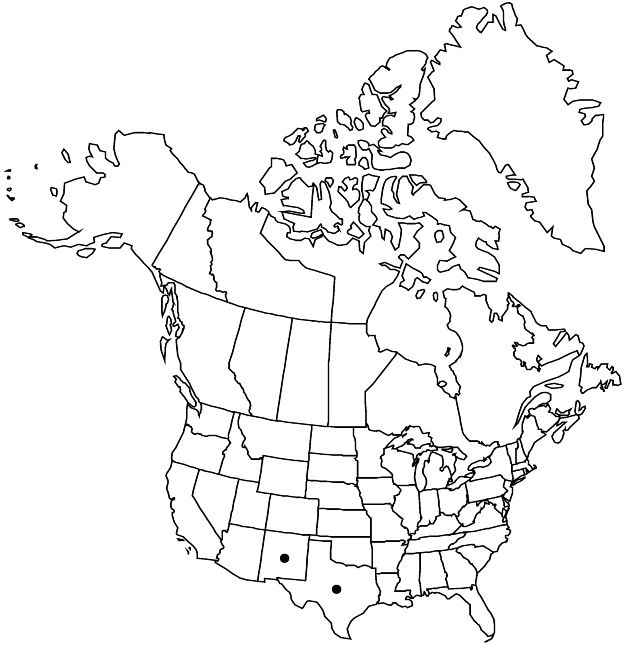Difference between revisions of "Sicyos microphyllus"
in A. von Humboldt et al., Nov. Gen. Sp. 2(fol.): 95.
2(qto.): 119. 1817.
FNA>Volume Importer |
FNA>Volume Importer |
(No difference)
| |
Revision as of 20:15, 24 September 2019
Stems: young sparsely puberulent, stipitate-glandular, often also hirsute-villous, hairs viscid, strongly to weakly glabrescent, becoming glabrate to sparsely minutely stipitate-glandular. Leaves: petiole (1–)2–4(–7) cm; blade orbiculate-pentagonal to deeply 5-lobed, sinuses (1/3–)1/2–2/3 to base, 4–10 × (4–)6–12 cm, terminal lobe deltate-acuminate to oblong-oblanceolate or obtrullate, basal sinus narrow to broad, margins not dentate, sometimes with few shallow, serrate teeth, evenly sharply indurate-apiculate, barely scabrous, not ciliate, surfaces hirsute to hispid-hirsute; proximal pair of lateral veins divergent from edge of basal sinus. Inflorescences: staminate 10–16-flowered, peduncle plus floral axis 40–140 mm; pistillate 4–10-flowered, peduncle (0–)1–5(–20) mm. Flowers: staminate: corolla greenish white, 2–3 mm, stamens not exserted; pistillate: sepals not foliaceous, mostly triangular, 0.2–2 mm, corolla 1–2 mm (essentially without a tube), stigmas 3-lobed. Pepos ovoid, 5–8 mm, echinate and sparsely, finely villous, spinules retrorsely barbellate.
Phenology: Flowering Sep–Oct.
Habitat: Rocky slopes and ridges, cliff bases, stream sides, yellow pine woodlands, thickets
Elevation: 2200–2600 m
Distribution

N.Mex., Tex., Mexico (Chihuahua, Coahuila, Durango, Nuevo León, San Luis Potosí, Sinaloa, Sonora, Zacatecas).
Discussion
Selected References
None.